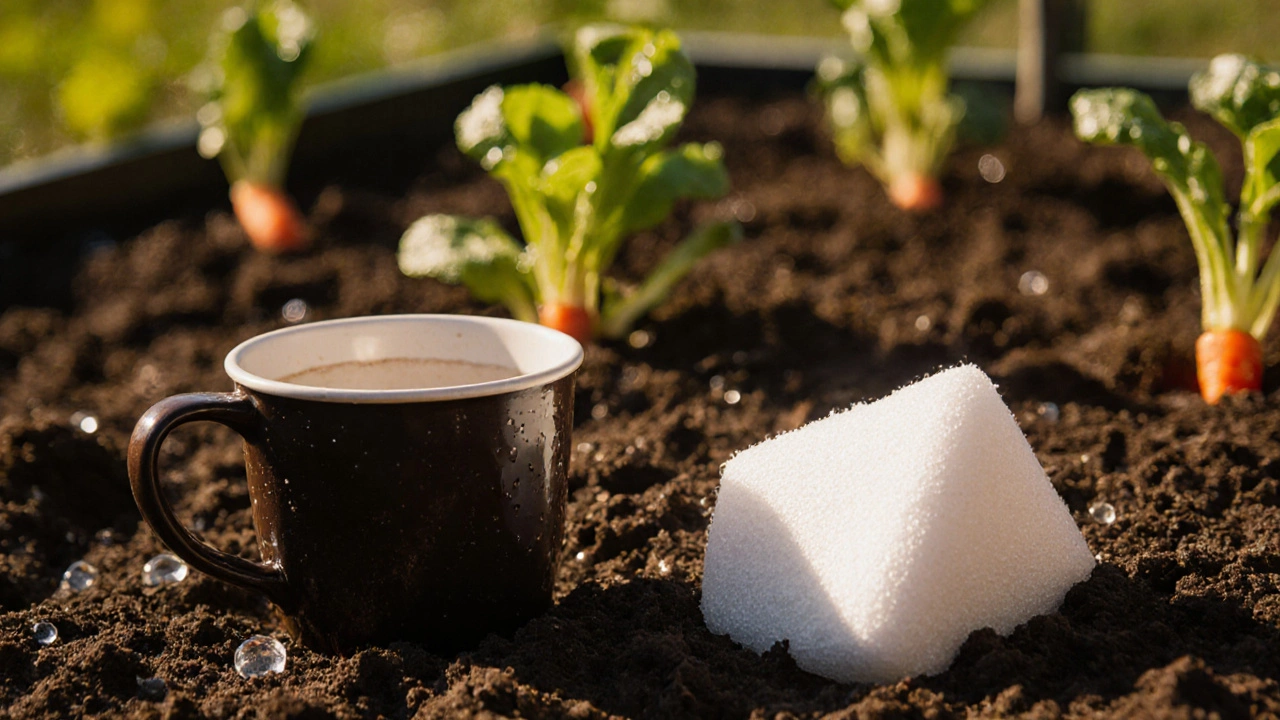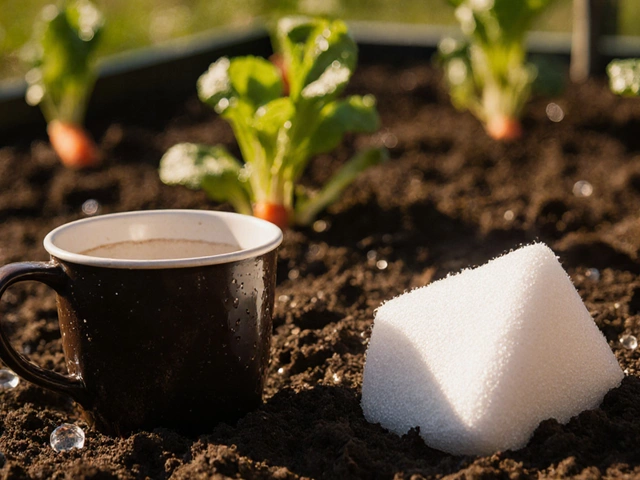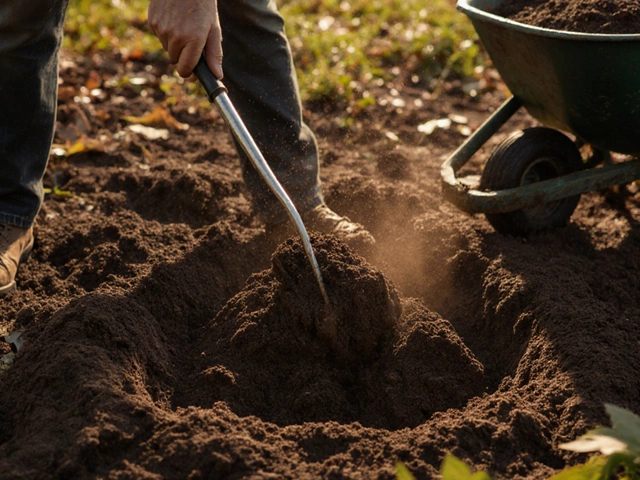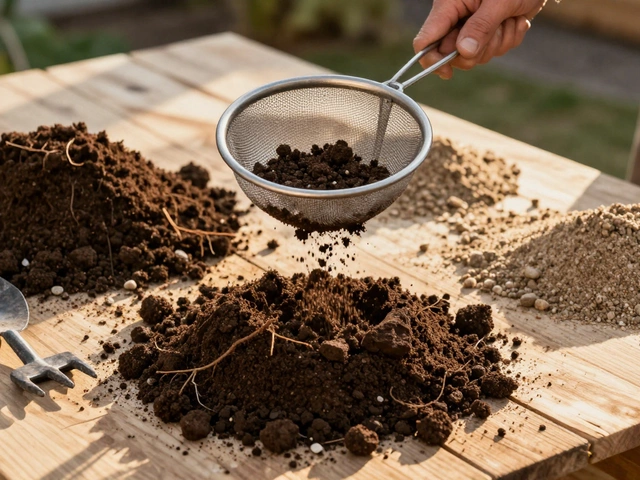Styrofoam Garden Risk Calculator
Garden Risk Assessment
Enter your garden details to see the potential risks of using Styrofoam as mulch
When you spot a broken coffee cup or a discarded take‑away container in the garden, the first question is often “Can I put this in the soil?” The short answer for vegetable growers is that it’s not that simple. Styrofoam is a brand name for expanded polystyrene foam, a lightweight plastic that many gardeners use as a cheap mulch or soil‑aeration aid. Below we unpack what the material actually does to your soil, which crops might be affected, and how you can make an informed decision before you start layering it around your beans and carrots.
What Exactly Is Styrofoam?
Polystyrene is a synthetic polymer derived from petroleum. When it’s expanded with gas, it forms the familiar white, bubbly material marketed as Styrofoam. Its key attributes are low density (about 0.05 g cm⁻³), high insulation value, and resistance to water absorption. Because it doesn’t decompose quickly, it’s often touted as a “permanent” mulch.
How Styrofoam Interacts With Garden Soil
Once placed in soil, Styrofoam creates air pockets that improve soil aeration. The material also slows surface evaporation, helping keep the top few centimeters moist. However, the same porous structure can also trap gases and push roots away from the surface, altering the natural root‑zone environment.
From a chemical standpoint, untreated polystyrene contains styrene monomer, a volatile organic compound (VOC) that can leach slowly under high temperatures or UV exposure. Laboratory studies in 2022 showed detectable styrene levels in soil water after 12 weeks of exposure to direct sunlight, although concentrations were well below most regulatory limits for drinking water. The real concern for veg growers is the cumulative effect of micro‑plastics and potential interactions with soil microbes.
Potential Benefits of Using Styrofoam
- Moisture retention: The foam’s closed cells act like a sponge, reducing surface runoff after rain.
- Weed suppression: A thick layer blocks light, making it harder for weed seeds to germinate.
- Thermal insulation: In cooler climates (e.g., Brighton), a Styrofoam blanket can keep soil temperatures a few degrees higher during early spring.
- Lightweight handling: One cubic foot of foam weighs less than a kilogram, so you can spread it without heavy equipment.
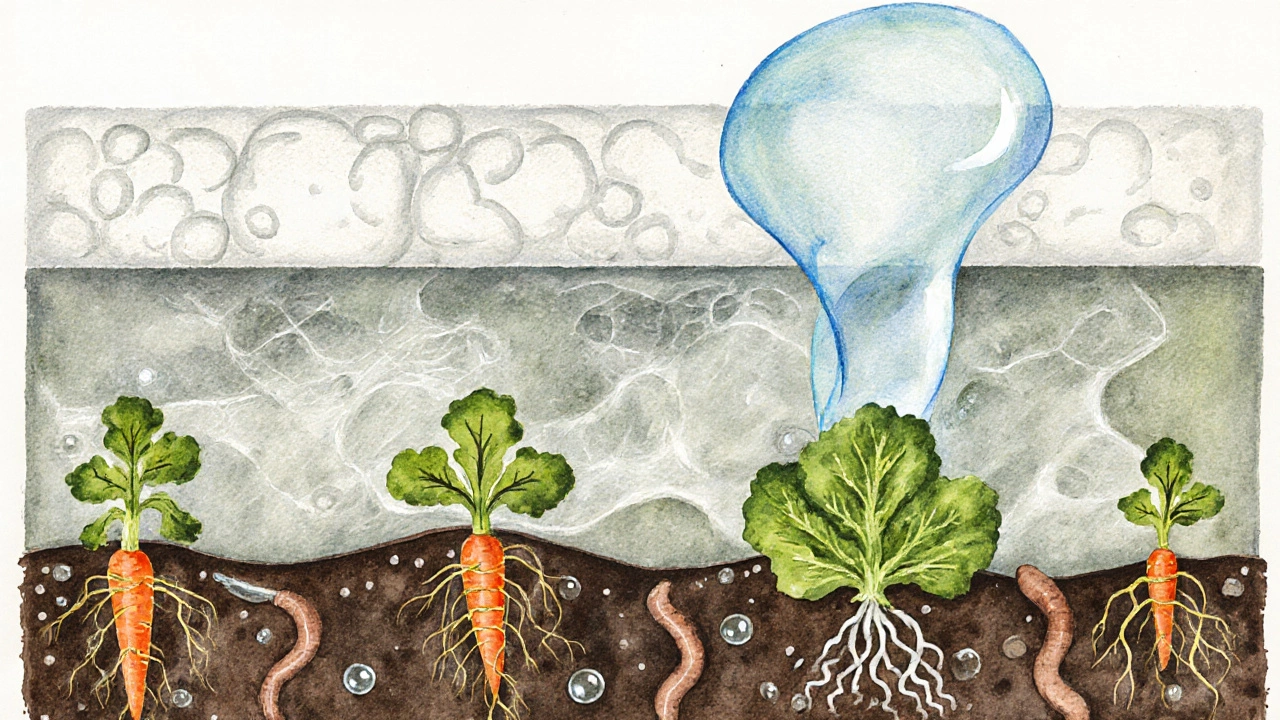
Risks You Should Know
While the short‑term benefits look appealing, several long‑term risks outweigh them for most vegetable growers:
- Chemical leaching: Heat or UV can cause styrene to off‑gas, potentially affecting delicate seedlings.
- Micro‑plastic accumulation: Over time the foam fragments into tiny particles that persist in the soil, interfering with root growth and water flow.
- Disruption of microbial life: Studies from the University of Leeds (2021) reported a 15 % decline in beneficial mycorrhizal fungi in soils covered with polystyrene for six months.
- Heat buildup: In sunny gardens, the foam can trap heat, raising soil temperature enough to scorch shallow‑rooted plants like lettuce.
- Physical barrier: Thick layers can impede seed placement and make it harder to water the soil directly.
Real‑World Examples
In a 2023 community garden in Manchester, volunteers tried using shredded Styrofoam as a low‑cost mulch for peas. After two growing seasons, yields dropped by roughly 20 % compared to adjacent beds mulched with straw. Soil tests showed a modest rise in styrene residues and a noticeable decline in earthworm activity.
Conversely, a rooftop garden in Helsinki reported that a thin (< 1 cm) sheet of Styrofoam under a wooden board helped keep the root zone warm during a very short spring, improving early tomato set. The key difference was that the foam never touched the soil directly; it acted as an insulating layer between the board and the ground.
Safer Alternatives for Vegetable Gardens
If you’re after the same moisture‑saving and weed‑blocking benefits without the plastic downsides, consider these options:
| Material | Cost (per m²) | Moisture Retention | Decomposition | Impact on Soil Life |
|---|---|---|---|---|
| Straw (clean, dry) | £0.30‑£0.45 | High | 6‑12 months | Neutral‑positive (adds organic matter) |
| Wood chips | £0.50‑£0.80 | Medium‑high | 1‑2 years | Positive (supports fungi) |
| Compost | Free‑ish (home‑made) | Very high | Immediate | Highly beneficial (adds nutrients) |
| Biodegradable mulch (corona‑treated PLA) | £1.20‑£1.60 | High | 3‑6 months | Neutral (breaks down without harmful residues) |
| Styrofoam | £0.10‑£0.20 | Medium | Non‑degradable | Negative (micro‑plastics, potential leaching) |
Notice how each alternative either adds organic matter or breaks down harmlessly. If your budget forces you to look at cheap options, shredded newspaper (ink‑free) can serve as a temporary weed barrier, though it should be layered with compost to avoid nitrogen tie‑up.
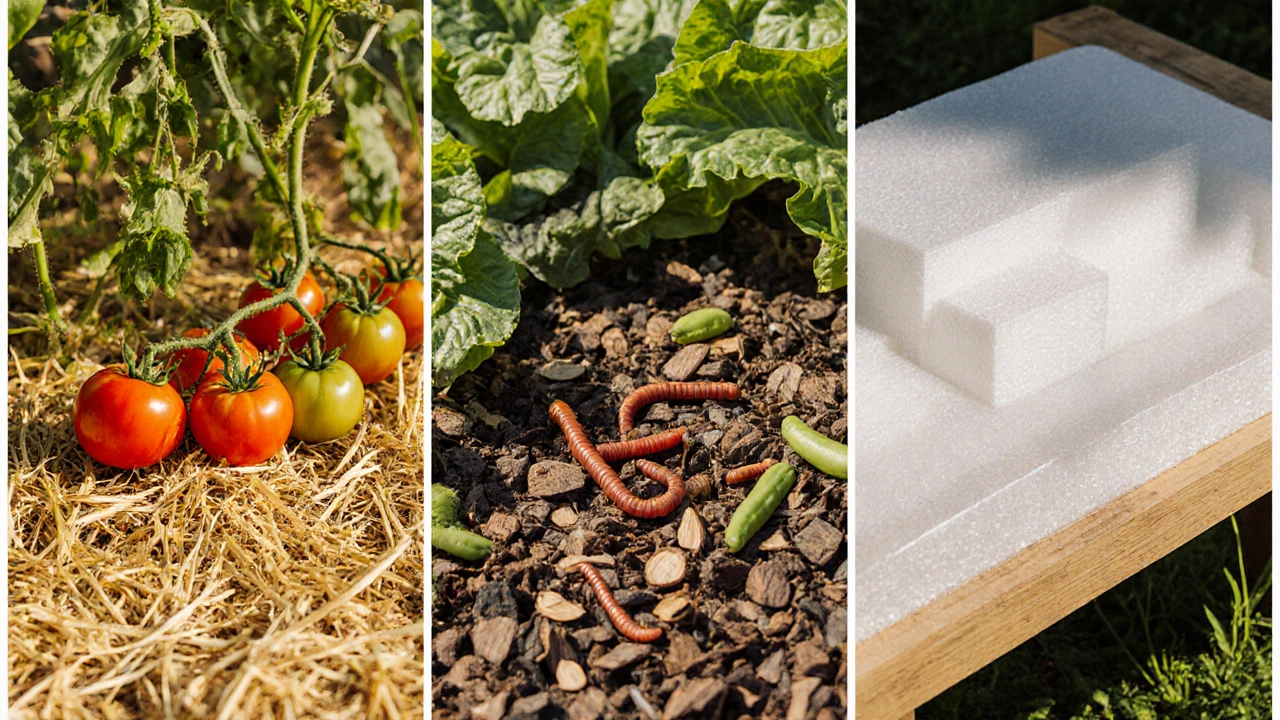
Practical Guidelines If You Still Want to Use Styrofoam
Should you decide that the heat‑insulation benefit outweighs the risks for a specific crop, follow these steps:
- Use only thin sheets (no more than 5 mm) and lay them on top of a base layer of organic mulch.
- Avoid direct contact with seedlings; place a breathable fabric (landscape cloth) between the foam and the soil.
- Remove the foam before the hottest part of summer arrives to prevent overheating.
- Inspect the material for cracks; replace any pieces that have broken into small shards.
- Test soil after the season for styrene residues if you have access to a garden lab or a local university extension service.
By treating Styrofoam as a temporary, removable insulation layer rather than a permanent mulch, you can limit its impact on soil health.
Bottom Line: Is Styrofoam Safe for Your Veg Garden?
Short answer: not really for long‑term use. The material’s inert appearance hides chemical leaching, micro‑plastic buildup, and negative effects on soil microbes. If you need a quick, cheap way to keep soil warm in early spring, a thin sheet placed under a board can work-but only if you remove it once the ground warms up.
For most vegetable growers, investing in organic mulches, wood chips, or certified biodegradable films gives you moisture control and weed suppression without the hidden downsides. Those options also contribute to the soil improvement goals that underpin healthy, productive harvests.
Quick Checklist Before You Pick a Mulch
- What’s the primary goal? (heat, moisture, weed control)
- Will the material stay in contact with the soil for months?
- Does it decompose into harmless organic matter?
- Can you easily remove it when conditions change?
- Is there a proven track record for the crops you grow?
Can Styrofoam leach chemicals into edible crops?
Under high heat or UV exposure, Styrofoam can release trace amounts of styrene. While levels are generally below drinking‑water limits, the long‑term accumulation in soil may affect root uptake, especially for leafy greens that develop close to the soil surface.
Does Styrofoam improve soil aeration?
Yes, the foam’s porous structure creates air pockets, which can help prevent compaction. However, the same pockets can also trap gases and reduce water infiltration if the layer is too thick.
Is there a safe way to combine Styrofoam with organic mulch?
Place a breathable landscape fabric over the soil, add a thin sheet of Styrofoam on top, then cover everything with a thick layer of organic mulch (straw, compost, or wood chips). This limits direct contact while still gaining the insulation benefit.
What crops are most sensitive to heat buildup from foam?
Leafy greens like lettuce, spinach, and arugula are the most vulnerable because their leaves sit close to the soil surface and can scorch if the temperature spikes by more than 4 °C.
Are there any regulations on using plastic mulch in the UK?
The UK does not ban plastic mulch outright, but the Environmental Protection Act encourages the use of biodegradable alternatives. Some local councils may offer incentives for reducing single‑use plastics in horticulture.
How can I test my soil for micro‑plastics?
Send a sample to a university lab (e.g., University of Leeds Soil Science department) that runs density separation and microscopy. Results will show particle size distribution and concentration per kilogram of soil.
